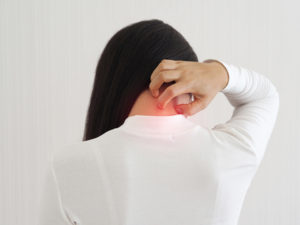Dystonia

Dystonia is an involuntary muscle contraction that can twist the muscle and can be very painful.
Some dystonias can involve the whole body and represent a familial and progressive disease. These so-called generalized dystonias require extensive diagnostic and genetic testing, and can be difficult to control. Fortunately, they are very rare.
Common Types of Dystonia
Most patients suffer with focal or segmental dystonias, which involve a particular muscle or group of muscles in one segment of the body. In theory, any body part can be involved, but in practice, some segments of the body are affected more than others. Common dystonias are detailed below.
Cervical Dystonia
Cervical dystonia, also known as spasmotic dystonia, occurs when specific muscle groups in the neck contract, causing neck pain and spasms. Sometimes, the contraction of the neck can cause the neck to rotate and can lead to abnormal neck posture and pain. This condition is known as torticollis.
Sometimes, cervical dystonia is associated with head tremors or shaking of the head.
It is important to understand that patients with cervical dystonia have variable involvement of neck movement, pain or tremor. While severe cases usually get appropriate therapy, milder cases of cervical dystonia can go undiagnosed for years, sometimes being mistaken for spinal problems. If the patient has neck pain and neck muscle contractions without obvious spinal disease and is not responding to spinal therapy, they should be evaluated for cervical dystonia.
Likewise, someone with an isolated head tremor (head shaking) should be evaluated for cervical dystonia. Botulinum toxin therapy is a first line, FDA-approved therapy for cervical dystonia and has been very successful in treating the disease.
Limb Dystonia
Another important group of focal dystonias are limb dystonias. The symptoms include repeated muscle spasms and pain in a particular limb (arm or leg). In the arm, most common dystonias involve a hand. Usually, a patient uses a hand in a repetitive fashion and develops cramps and abnormal hand postures, which cause painful spasms. In the leg, the dystonia usually involves the muscles rotating, flexing and extending the foot and small muscles in the foot. Limb dystonias respond well to botulinum toxin injections by experienced and well-trained specialists.
Seeking dystonia treatment in Palos Heights, Orland Park or Tinley Park? Contact our office to learn more about your options and meet with our skilled team.
